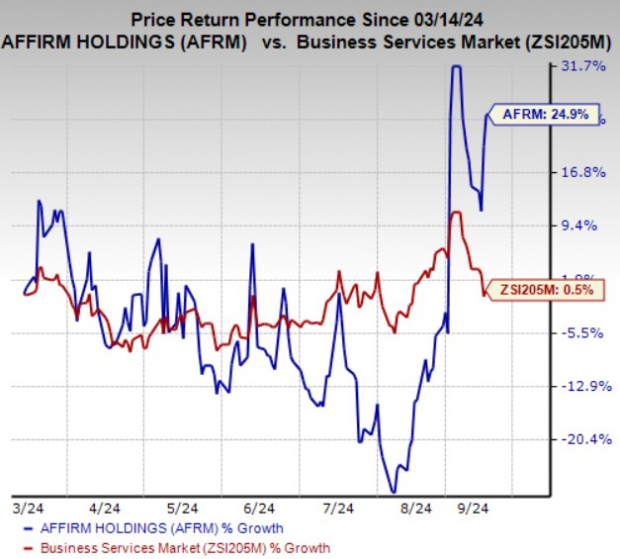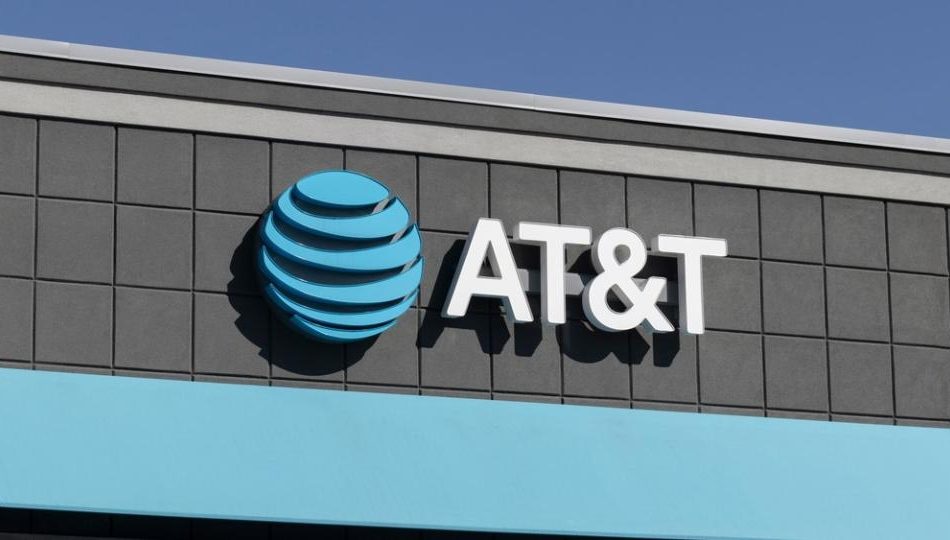CEO of JPMorgan warns US of economic fate worse than recession: 'The worst outcome'
JPMorgan Chase CEO has laid out the “worst outcome” for America’s economic future, beyond recession.
“The worst outcome is stagflation,” said Dimon. “And by the way, I wouldn’t take it off the table.”
68-year-old Jamie Dimon made his remarks on Tuesday at the Council of Institutional Investors in New York.
INFLATION RISES 2.5% IN AUGUST, LESS THAN EXPECTED
JPMorgan Chase is the largest bank in the United States according to Bankrate, with $3.4T in assets.
Stagflation, a portmanteau of stagnation and inflation, refers to a state where economic growth slows while inflation and unemployment rise.
The economic consequences of stagflation may cause retirement savings to go down as well as the stock market to crash; it was last seen in the U.S. during the 1970s, according to Investopedia.
While inflation in August grew less than expected at 2.5%, the outlook for the federal debt is bleak, with the growing number measuring $35,309,184,612,870.00 as of September 12.
CONSUMERS SEE INFLATION EASING, ANXIOUS ABOUT JOB MARKET, PERSONAL DEBT: NY FED SURVEY
Interest payments due in October on the national debt now exceed the costs of both Medicare and the national defense budget. National debt may contribute to further inflation on the horizon.
This is the first time in American history that interest payments on the national debt have risen above $1T.
“So, it’s hard to look at [it] and say, ‘Well, no, we’re out of the woods.’ I don’t think so,” said Dimon.
JPMorgan shares have gained over 18% this year, inline with the S&P 500’s rise.
Original article source: CEO of JPMorgan warns US of economic fate worse than recession: ‘The worst outcome’
Affirm's Survey Reveals 0% APR Option Impact, CEO Outlines Growth Plan
Affirm Holdings, Inc. AFRM recently unveiled results from its latest survey, highlighting consumer shopping behaviors before the holiday season of 2024. The study of 2,000 Americans unveiled how the 0% annual percentage rate (APR) options would influence consumers while making purchase decisions and how confident they are about budgeting. This bodes well for a company like Affirm, offering flexible and transparent payment solutions.
The survey revealed that 48% of respondents are influenced by the availability of 0% APR. Benefits of 0% APR include saving on interest costs, the ability to afford bigger purchases, and greater ease while budgeting, according to 28%, 19%, and 17% of respondents, respectively.
Additionally, 42%, 28% and 25% of consumers view 0% APR offers as suitable for purchasing furniture or appliances, electronics, and everyday items, respectively. This highlights the growing inclination toward AFRM’s solutions, poising it well for the future. The survey also highlighted that despite current macroeconomic concerns, 70% of Americans feel more confident in their ability to manage finances compared to the previous year.
In a recent Goldman Sachs Communacopia and Tech Conference, AFRM’s CEO Max Levchin emphasized the company’s evolution beyond its origin as a buy now, pay later solution to a broader payments company. Levchin also mentioned that Affirm aims to become a modern alternative to American Express Company AXP with a “pro-consumer attitude.” Affirm aims to leverage artificial intelligence to enhance employee productivity rather than reduce jobs.
Leveraging its expanded network with more merchants, customers and enhanced offerings should aid AFRM in achieving its goal of being profitable for the first time in the fourth quarter of fiscal 2024. AFRM also raised its outlook for fiscal 2025 GMV to be more than $33.5 billion, highlighting confidence in its prospects.
AFRM’s Zacks Rank and Price Performance
Affirm currently has a Zacks Rank #2 (Buy). In the past six months, shares of Affirm have gained 24.9% compared with 0.5% growth of the industry it belongs to.

Image Source: Zacks Investment Research
Other Stocks to Consider
Investors can look at some other top-ranked stocks from the broader Business Services space like Fidelity National Information Services, Inc. FIS and Paysign, Inc. PAYS. Each stock presently carries a Zacks Rank #2.
The Zacks Consensus Estimate for Fidelity National’s current-year earnings indicates a 50.5% year-over-year jump. FIS beat earnings estimates in two of the trailing four quarters and missed twice. The consensus estimate for current-year revenues is pegged at $10.2 billion.
The Zacks Consensus Estimate for Paysign’s current-year bottom line indicates 75% year-over-year growth. The consensus estimate for PAYS’ current-year revenues is pegged at $58 million, suggesting 22.6% year-over-year growth.
Market News and Data brought to you by Benzinga APIs
© 2024 Benzinga.com. Benzinga does not provide investment advice. All rights reserved.
What Is the Dividend Payout for Berkshire Hathaway?
If you’re in the market for dividend income, good for you! It’s hard to beat the power of dividend investing. Not only do you get a regular stock that will, ideally, grow in value over time, but it will also regularly plunk extra dollars into your investment account.
If you’re retired, that retirement income can come in very handy — without requiring you to shave off any shares. If you’re a pre-retiree, you might just reinvest those dividends into more shares of stock. Better still, healthy and growing dividend-paying companies will generally increase their payouts over time.
It’s reasonable to wonder whether Warren Buffett’s Berkshire Hathaway (NYSE: BRK.A) (NYSE: BRK.B) would be a good dividend-paying stock for you. It’s certainly a terrific stock to own. It specializes in insurance, energy, and transportation, and encompasses many businesses owned outright (such as GEICO, Benjamin Moore, Dairy Queen, McLane, and the entire BNSF railroad), along with sizable chunks of other companies (such as Apple, American Express, Coca-Cola, and Bank of America).
Here’s the catch, though: Berkshire doesn’t pay a dividend!
Buffett does love dividends, though. Thanks to the shares of stock owned by Berkshire, the company collects more than $5 billion in dividend income annually. So why no dividends from the company? Well, remember that when a company earns income, it can do many things with it. It might use that money to fuel growth — and that’s why many young, faster-growing companies opt not to pay dividends. It might alternatively pay down debts, acquire other companies, buy investments, or repurchase shares. Buffett does like to repurchase shares when they seem undervalued to him, and he’s famous for buying other businesses when he finds ones he likes available at a great or good price.
Buffett has explained that, essentially, when Berkshire has more cash than can be deployed in useful ways, it might initiate a dividend. But that might not happen for a long time. For now, the company was recently sitting on about $277 billion in cash!
Should you invest $1,000 in Berkshire Hathaway right now?
Before you buy stock in Berkshire Hathaway, consider this:
The Motley Fool Stock Advisor analyst team just identified what they believe are the 10 best stocks for investors to buy now… and Berkshire Hathaway wasn’t one of them. The 10 stocks that made the cut could produce monster returns in the coming years.
Consider when Nvidia made this list on April 15, 2005… if you invested $1,000 at the time of our recommendation, you’d have $716,375!*
Stock Advisor provides investors with an easy-to-follow blueprint for success, including guidance on building a portfolio, regular updates from analysts, and two new stock picks each month. The Stock Advisor service has more than quadrupled the return of S&P 500 since 2002*.
*Stock Advisor returns as of September 9, 2024
Bank of America is an advertising partner of The Ascent, a Motley Fool company. American Express is an advertising partner of The Ascent, a Motley Fool company. Selena Maranjian has positions in American Express, Apple, Bank of America, and Berkshire Hathaway. The Motley Fool has positions in and recommends Apple, Bank of America, and Berkshire Hathaway. The Motley Fool has a disclosure policy.
What Is the Dividend Payout for Berkshire Hathaway? was originally published by The Motley Fool
Transgene and BioInvent's Oncolytic Virus BT-001 Shows Promising Antitumor Activity in Ongoing Phase I/IIa Trial in Solid Tumors that Failed Previous Treatments
Preliminary data presented at ESMO 2024 demonstrate that BT-001 induces tumor regression in patients who failed previous anti-PD(L)-1 treatment
In a patient with a heavily pretreated leiomyosarcoma, BT-001 was able to modulate the tumor microenvironment, turning a “cold” tumor to “hot”, enhancing the potential of T cell infiltration and a shift to PD(L)-1 positivity
Early signs of efficacy with clinical responses observed with BT-001 in combination with KEYTRUDA® (pembrolizumab), in 2 of 6 patients who failed previous treatment
Strasbourg, France, and Lund, Sweden, September 14, 2024, 9:05 a.m. CET – Transgene TNG, a biotech company that designs and develops virus-based immunotherapies for the treatment of cancer, and BioInvent International AB (“BioInvent”) (Nasdaq Stockholm: BINV), a biotech company focused on the discovery and development of novel and first-in-class immune-modulatory antibodies for cancer immunotherapy, today announce new initial data from their ongoing Phase I/IIa study on the multifunctional oncolytic virus BT-001, demonstrating antitumor activity in patients who failed previous treatments.
The data presented today at the 2024 European Society for Medical Oncology (ESMO) Annual Meeting, show that BT-001 induced tumor regression in patients unresponsive to prior anti PD(L)-1 treatment, both as a monotherapy and in combination with MSD’s (Merck & Co., Inc., Rahway, NJ, USA) anti-PD-1 therapy KEYTRUDA® (pembrolizumab).
Preliminary translational data suggest that BT-001 replicates in the tumor where the payloads are expressed with undetectable systemic exposure. BT-001 alone or in combination with pembrolizumab was well tolerated and showed first signs of efficacy with clinical responses in 2 of 6 patients who failed previous treatments, when given in combination with pembrolizumab. BT-001 treatment turned “cold” tumors to “hot” inducing T cell infiltration, a higher M1/M2 ratio, and a shift to PD(L)-1 positivity in the tumor microenvironment.
Dr. Stéphane Champiat, Medical Oncologist, Head of the Inpatient Unit, Drug Development Department (DITEP) at Institut Gustave Roussy, commented: “The immunological data generated by BT-001 suggest that, as hoped, BT-001 is replicating in the tumor and its payload of transgenes is expressed with very limited exposure outside of the tumor thereby limiting systemic toxicity. I look forward to additional results from this ongoing study which will provide further evidence of the safety and clinical activity of BT-001 and its potential role as a new therapy for cancer patients with solid tumors.”
Transgene and BioInvent are co-developing BT-001, an oncolytic virus developed using Transgene’s Invir.IO® platform armed to express GM-CSF and BioInvent’s full-length anti-CTLA-4 monoclonal antibody, to elicit a strong and effective anti-tumoral response in solid tumors.
Dr. Alessandro Riva, Chairman and CEO of Transgene, said: “We are pleased to present the first promising clinical data on BT-001 at ESMO 2024, which confirm its mechanism of action as a single agent injected intratumorally and importantly demonstrate first signs of anti-tumor activity. Added to its good safety profile alone and in combination with pembrolizumab, BT-001 has the potential to shrink lesions and induce stable disease in refractory patients who may have few other treatment options. We will further explore the safety and efficacy of BT-001 in this development program with our partner BioInvent, and report additional data when it becomes available.”
Andres McAllister, MD, PhD, Chief Medical Officer at BioInvent International AB, concluded: “We are encouraged by the early clinical results presented at ESMO for BT-001, which encodes a potent Treg-depleting recombinant human anti-CTLA-4 antibody generated by our proprietary n-CoDeR® and F.I.R.S.T™ platforms. This clinical proof of concept confirms our ability to identify antibodies that bind to a selected target but exhibit a differentiated activity, allowing the development of promising new drug candidates such as BT-001.”
The abstract and poster titled: “Initial clinical results of BT-001, an oncolytic virus expressing an anti-CTLA4 mAb, administered as single agent and in combination with pembrolizumab in patients with advanced solid tumors.”, can be accessed on the ESMO and Transgene websites.
KEYTRUDA® is a registered trademark of Merck Sharp & Dohme LLC, a subsidiary of Merck & Co., Inc., Rahway, NJ, USA.
***
Contacts
| Transgene Contacts: | Transgene Media Contact: |
| Media: | MEDiSTRAVA |
| Caroline Tosch | Frazer Hall/Sylvie Berrebi |
| Corporate Communications Manager | + 44 (0) 203 928 6900 |
| +33 (0)3 68 33 27 38 | transgene@medistrava.com |
| communication@transgene.fr | |
| Lucie Larguier | |
| Chief Financial Officer | |
| Nadege Bartoli | |
| IR Analyst & Financial Communications Officer | |
| +33 (0)3 88 27 91 03 /00 | |
| investorrelations@transgene.fr |
About the trial
The ongoing Phase I/IIa (NCT: 04725331) study is a multicenter, open label, dose-escalation trial evaluating BT-001 as a single agent and in combination with pembrolizumab (anti-PD-1 treatment). Patient inclusions are ongoing in Europe (France, Belgium) and the trial has been authorized in the US.
This Phase I is divided into two parts. In part A, patients with metastatic/advanced tumors receive single agent, intra-tumoral administrations of BT-001. Part B explores the combination of intra-tumoral injections of BT-001 with pembrolizumab. In this part, KEYTRUDA® (pembrolizumab) is provided to the trial by MSD (Merck & Co).
The Phase IIa will evaluate the combination regimen in several patient cohorts with selected tumor types. These expansion cohorts will offer the possibility of exploring the activity of this approach to treat other malignancies not traditionally addressed with this type of treatment.
About BT-001
BT-001 is an oncolytic virus generated using Transgene’s Invir. IO® platform and its patented large-capacity VVcopTK–RR– oncolytic virus, which has been engineered to encode both a Treg-depleting human recombinant anti-CTLA-4 antibody generated by BioInvent’s proprietary n-CoDeR®/F.I.R.S.T™ platforms, and the human GM-CSF cytokine. By selectively targeting the tumor microenvironment, BT-001 is expected to elicit a much stronger and more effective antitumoral response. As a consequence, by reducing systemic exposure, the safety and tolerability profile of the anti-CTLA-4 antibody may be greatly improved.
BT-001 is being co-developed as part of a 50/50 collaboration on oncolytic viruses between Transgene and BioInvent. To know more on BT-001, watch our video here.
About Transgene
Transgene TNG is a biotechnology company focused on designing and developing targeted immunotherapies for the treatment of cancer. Transgene’s programs utilize viral vector technology with the goal of indirectly or directly killing cancer cells.
The Company’s clinical-stage programs consist of a portfolio of therapeutic vaccines and oncolytic viruses: TG4050, the first individualized therapeutic vaccine based on the myvac® platform, TG4001 for the treatment of HPV-positive cancers, as well as BT-001 and TG6050, two oncolytic viruses based on the Invir. IO® viral backbone.
With Transgene’s myvac® platform, therapeutic vaccination enters the field of precision medicine with a novel immunotherapy that is fully tailored to each individual. The myvac® approach allows the generation of a virus-based immunotherapy that encodes patient-specific mutations identified and selected by Artificial Intelligence capabilities provided by its partner NEC.
With its proprietary platform Invir. IO®, Transgene is building on its viral vector engineering expertise to design a new generation of multifunctional oncolytic viruses.
Additional information about Transgene is available at: www.transgene.fr
Follow us on social media: X (formerly Twitter): @TransgeneSA – LinkedIn: @Transgene
About BioInvent
BioInvent International AB (Nasdaq Stockholm: BINV) is a clinical-stage biotech company that discovers and develops novel and first-in-class immuno-modulatory antibodies for cancer therapy, with currently four drug candidates in five ongoing clinical programs in Phase 1/2 trials for the treatment of hematological cancer and solid tumors, respectively. The Company’s validated, proprietary F.I.R.S.T™ technology platform identifies both targets and the antibodies that bind to them, generating many promising new drug candidates to fuel the Company’s own clinical development pipeline and providing licensing and partnering opportunities.
The Company generates revenues from research collaborations and license agreements with multiple top-tier pharmaceutical companies, as well as from producing antibodies for third parties in the Company’s fully integrated manufacturing unit. More information is available at www.bioinvent.com. Follow on Twitter: @BioInvent.
More information is available at www.bioinvent.com.
Follow us on Twitter: @BioInvent
Transgene disclaimer
This press release contains forward-looking statements, which are subject to numerous risks and uncertainties, which could cause actual results to differ materially from those anticipated. The occurrence of any of these risks could have a significant negative outcome for the Company’s activities, perspectives, financial situation, results, regulatory authorities’ agreement with development phases, and development. The Company’s ability to commercialize its products depends on but is not limited to the following factors: positive pre-clinical data may not be predictive of human clinical results, the success of clinical studies, the ability to obtain financing and/or partnerships for product manufacturing, development and commercialization, and marketing approval by government regulatory authorities. For a discussion of risks and uncertainties which could cause the Company’s actual results, financial condition, performance or achievements to differ from those contained in the forward-looking statements, please refer to the Risk Factors (“Facteurs de Risque”) section of the Universal Registration Document, available on the AMF website (http://www.amf-france.org) or on Transgene’s website (www.transgene.fr). Forward-looking statements speak only as of the date on which they are made, and Transgene undertakes no obligation to update these forward-looking statements, even if new information becomes available in the future.
BioInvent disclaimer
The press release contains statements about the future, consisting of subjective assumptions and forecasts for future scenarios. Predictions for the future only apply as the date they are made and are, by their very nature, in the same way as research and development work in the biotech segment, associated with risk and uncertainty. With this in mind, the actual outcome may deviate significantly from the scenarios described in this press release.

© 2024 Benzinga.com. Benzinga does not provide investment advice. All rights reserved.
How Much Would It Take To Earn $1,000 A Month In Dividends With Just Four Stocks?
Benzinga and Yahoo Finance LLC may earn commission or revenue on some items through the links below.
Many investors dream of passive income. Not relying only on a paycheck can free you up to pursue your dreams, get you closer to retirement, or provide a solid safety cushion for potential times of trouble.
Dividend investing can be a way to build a nest egg and let your money work for you. Getting to $1,000 in monthly income means you would have to generate $12,000 in dividends annually. To do that, you must have stocks meeting a few criteria. They have to provide a consistent and stable dividend payment. Some high-yield stocks can be tempting, but peering at the dividend history may reveal dividend cuts or pauses. The company’s health, the sector it is in, and the strength of the balance sheet all help determine which stocks can go the distance.
Trending Now:
-
This billion-dollar fund has invested in the next big real estate boom, here’s how you can join for $10.
This is a paid advertisement. Carefully consider the investment objectives, risks, charges and expenses of the Fundrise Flagship Fund before investing. This and other information can be found in the Fund’s prospectus. Read them carefully before investing. -
A billion-dollar investment strategy with minimums as low as $10 — you can become part of the next big real estate boom today.
This is a paid advertisement. Carefully consider the investment objectives, risks, charges and expenses of the Fundrise Flagship Fund before investing. This and other information can be found in the Fund’s prospectus. Read them carefully before investing.
Can you generate $1,000 in monthly income using just four dividend-paying stocks? This portfolio would aim for yield and reliability, focusing on industry diversification. Assuming an average dividend yield across four stocks is around 4%, the total investment needed would be around $300,000 to generate $12,000 annually at a 4% yield.
Choosing The Right Stocks
A mix of stocks from different sectors can balance risk while targeting high and stable dividend yields. These might include:
1. Altria Group, Inc. (NYSE:MO)
-
Sector: Consumer Staples (Tobacco)
-
Dividend Yield: 7.6%
-
Why: Altria has a long history of paying high dividends despite operating in a declining industry. Its high yield helps meet income goals faster.
-
Watch For: Revenue for the company’s smokeable products declined by 5.6% in the second quarter of 2024. The company is transitioning toward more smoke-free offerings. Investors will want to keep tabs on the company’s progress in that area. “We’re confident in the long-term outlook for our smoke-free portfolio, and we have a significant opportunity to responsibly lead the transition of adult smokers to a smoke-free future,” said Billy Gifford, Altria’s CEO, during the second-quarter earnings call.
2. AT&T Inc. (NYSE:T)
-
Sector: Telecommunications
-
Dividend Yield: 5.29%
-
Why: While AT&T has faced challenges, it maintains a strong dividend. It operates in a cash flow-heavy industry, which supports stable dividends over time.
-
Watch For: As one analyst said, AT&T needs to manage “growth and profitability.” That means expanding the mobility business and preparing for the broadband future. “This story is about growing customers and profitability as our consumer wireline business delivered more than 7% EBITDA growth during the second quarter. This was driven by approximately 18% growth in fiber revenues and improved operating leverage as we transition from legacy networks to advanced broadband infrastructure,” said AT&T CEO John Stankey on the second-quarter earnings call.
3. Realty Income Corporation (NYSE:O)
-
Sector: Real Estate (REIT)
-
Dividend Yield: 5.06%
-
Why: Realty Income is a REIT known for paying monthly dividends, offering stability and regular income. It’s a strong choice for consistent cash flow.
-
Watch For: Investors will want to track how Realty Income handles debt. In August, it announced a $500 million public offering of 5.375% senior unsecured notes due 2054, with an effective yield of 5.486%. The company has also signaled it may be quicker to sell some properties. “As we continue to calibrate and hone our predictive analytic tools, advancing our investment pieces on each property in our portfolio, we may be more active on dispositions than in the past,” said Realty Income CEO Sumit Roy on the second-quarter earnings call.
4. Johnson & Johnson (NYSE:JNJ)
-
Sector: Healthcare
-
Dividend Yield: 3.02%
-
Why: Though it has a lower yield than the others, J&J is highly stable and has a strong record of dividend growth, making it a good defensive stock.
-
Watch For: Johnson & Johnson is deepening its exposure to medtech through strategic acquisitions. Last month, it announced paying $1.7 billion for V-Wave, a medical device company focused on cardiovascular issues. “We continue to advance our pipeline, launch new commercial products, and integrate strategic acquisitions that broaden and further differentiate our portfolio,” said Joseph Wolk, the company’s Chief Financial Officer, on the most recent earnings call.
Read More:
Adjusting The Allocation
Given the different yields, we would allocate more capital to lower-yielding but more stable stocks like Johnson & Johnson and Realty Income. Higher-yielding stocks like Altria and AT&T could require less capital. The combined yield of these four stocks is 5.2%, meaning it could take less than $300,000 to reach that $12,000 yearly goal.
These are just assumptions, and investors will want to remember that high-yield stocks like Altria and AT&T come with more risk, while J&J provides stability but a lower yield. Each stock’s dividend payout ratio and financial health must be monitored to ensure sustainable dividends. Although this portfolio is diversified across sectors, it’s still important to review it regularly. Diversifying into other stocks, bonds, and real estate can provide additional income and safety against broader downturns.
Another Way To Build Wealth
The current high-interest-rate environment has created an incredible opportunity for income-seeking investors to earn massive yields, but not through dividend stocks… Certain private market real estate investments are giving retail investors the opportunity to capitalize on these high-yield opportunities and Benzinga has identified some of the most attractive options for you to consider.
For instance, the Ascent Income Fund from EquityMultiple targets stable income from senior commercial real estate debt positions and has a historical distribution yield of 12.1% backed by real assets. With payment priority and flexible liquidity options, the Ascent Income Fund is a cornerstone investment vehicle for income-focused investors. First-time investors with EquityMultiple can now invest in the Ascent Income Fund with a reduced minimum of just $5,000. Benzinga Readers: Earn a 1% return boost on your first EquityMultiple investment when you sign up here (accredited investors only).
Don’t miss out on this opportunity to take advantage of high-yield investments while rates are high. Check out Benzinga’s favorite high-yield offerings.
This article How Much Would It Take To Earn $1,000 A Month In Dividends With Just Four Stocks? originally appeared on Benzinga.com
DarioHealth And 2 Other Stocks Under $5 Executives Are Buying
The Dow Jones index closed higher by more than 200 points on Thursday. When insiders purchase or sell shares, it indicates their confidence or concern around the company’s prospects. Investors and traders interested in penny stocks can consider this a factor in their overall investment or trading decision.
Below is a look at a few recent notable insider transactions for penny stocks. For more, check out Benzinga’s insider transactions platform.
Red Robin
- The Trade: Red Robin Gourmet Burgers, Inc. RRGB President and CEO Gerard Johan Hart bought a total of 10,000 shares at an average price of $3.15. To acquire these shares, it cost around $31,526.
- What’s Happening: On Aug. 22, Red Robin reported downbeat earnings for its second quarter and lowered its FY24 revenue guidance.
- What Red Robin Does: Red Robin Gourmet Burgers Inc is a restaurant operator. The company develops, operates, and franchises casual-dining restaurants and fast-casual restaurants in North America.
DarioHealth
- The Trade: DarioHealth Corp DRIO Chief Commercial Officer Steven Charles Nelson acquired a total of 10,000 shares at an average price of $0.82. To acquire these shares, it cost around $8,244.
- What’s Happening: On Aug. 8, DarioHealth posted second-quarter GAAP earnings of 8 cents per share.
- What DarioHealth Does: DarioHealth Corp is a digital therapeutics (DTx) company delivering personalized evidence-based interventions that are driven by precision data analytics, software, and personalized coaching.
Nerdy
- The Trade: Nerdy Inc NRDY Director Abigail Blunt acquired a total of 49,045 shares at an average price of $0.91. The insider spent around $44,631 to buy those shares.
- What’s Happening: On Aug. 8, Nerdy reported worse-than-expected second-quarter revenue.
- What Nerdy Does: Nerdy Inc is a curated direct-to-consumer platform for live online learning. Its purpose-built proprietary platform leverages technology, including AI, to connect learners of all ages to experts, delivering superior value on both sides of the network.
Market News and Data brought to you by Benzinga APIs
© 2024 Benzinga.com. Benzinga does not provide investment advice. All rights reserved.
Why I Just Bought These 2 High-Yield REIT Stocks
Own real estate without the headaches of owning real estate. That’s the big advantage of investing in real estate investment trusts (REITs). And REIT stocks come in lots of different flavors.
Realty Income (NYSE: O) and National Storage Affiliates Trust (NYSE: NSA) are great examples. The former owns several types of commercial properties, while the latter focuses exclusively on self-storage facilities. Here’s why I just bought these two high-yield REIT stocks.
1. Solid businesses with great long-term prospects
I like buying stocks and holding them for years. My top criteria in picking stocks are the strength of their underlying businesses and how likely they are to perform well over a long period. Both Realty Income and National Storage Affiliates (NSA) check off those boxes nicely.
Realty Income ranks as the seventh-largest global REIT with a market cap in the ballpark of $55 billion. It’s been in business for 55 years and boasts a solid A3 and A- (medium investment-grade) credit rating from Moody’s and S&P, respectively.
The REIT’s diversification is a big plus. Realty Income owns 15,450 properties with clients spanning 90 industries. Its top tenants include Dollar General, Walgreens, Dollar Tree, and Wynn Resorts. However, no client makes up more than 3.4% of annualized contractual rent.
Realty Income has good growth prospects in the U.S., including opportunities in retail, consumer-centric medical, and data centers. However, the big prize for the company is in Europe, which represents a total addressable market of $8.5 trillion.
NSA is much smaller than Realty Income, with a market cap below $4 billion. It owns 1,052 self-storage properties spread across 42 states and Puerto Rico. Roughly 65% of NSA’s properties are located in the Sunbelt, a region with an influx of migration and strong employment and housing trends.
Self-storage is an especially attractive real estate niche. Not only have self-storage REITs outperformed other REIT sectors over the last 30 years, but they’ve also been significantly less volatile.
I like NSA’s growth prospects largely because of fragmentation in the self-storage market. The top 50 operators only claim 32% of the total market, based on the number of facilities. NSA’s market share is only 2%.
2. A nice head start on strong total returns
Realty Income offers a forward dividend yield of 5.02%. The company has also increased its dividend for an impressive 29 consecutive years, with a compound annual growth rate of 4.3% since 1994.
NSA isn’t too far behind, with a forward dividend yield of 4.75%. The REIT boasts a decent track record of dividend hikes, as well, and has increased its dividend for eight consecutive years. What’s especially notable is that NSA has grown its dividend by a whopping 75% over the last five years.
I don’t rely on dividend income yet, although it could help fund my retirement down the road. The key advantage of Realty Income’s and NSA’s great dividends, in my view, is that they provide a nice head start for both stocks in delivering strong total returns.
3. A Fed-driven catalyst could be on the way
I invest for the long term, but I certainly don’t mind if the stocks I buy have positive short-term catalysts. Both Realty Income and NSA could have a Fed-driven catalyst on the way.
The Federal Reserve seems likely to reduce interest rates later this month. With any luck, this will be the first of several rate cuts.
REIT stocks often respond well to lower interest rates for a couple of reasons. First, they rely on borrowing to purchase additional properties. When rates decline, they can invest in expansion at lower costs. Second, lower rates drive bond yields down. Income investors could view REIT stocks as attractive alternatives to bonds when interest rates fall.
Again, this isn’t my top reason for buying Realty Income and NSA stocks. However, I think there’s a good chance that my investments will pay off sooner rather than later, thanks to the likelihood of the Fed cutting interest rates.
Should you invest $1,000 in National Storage Affiliates Trust right now?
Before you buy stock in National Storage Affiliates Trust, consider this:
The Motley Fool Stock Advisor analyst team just identified what they believe are the 10 best stocks for investors to buy now… and National Storage Affiliates Trust wasn’t one of them. The 10 stocks that made the cut could produce monster returns in the coming years.
Consider when Nvidia made this list on April 15, 2005… if you invested $1,000 at the time of our recommendation, you’d have $716,375!*
Stock Advisor provides investors with an easy-to-follow blueprint for success, including guidance on building a portfolio, regular updates from analysts, and two new stock picks each month. The Stock Advisor service has more than quadrupled the return of S&P 500 since 2002*.
*Stock Advisor returns as of September 9, 2024
Keith Speights has positions in Dollar General, National Storage Affiliates Trust, and Realty Income. The Motley Fool has positions in and recommends Moody’s, Realty Income, and S&P Global. The Motley Fool has a disclosure policy.
Why I Just Bought These 2 High-Yield REIT Stocks was originally published by The Motley Fool
Mark Zuckerberg Says He Is Done Apologizing, Reveals One Of The Biggest Mistakes Of His Career
Meta Platforms Inc. CEO Mark Zuckerberg says he has grown tired of taking on too much ownership of problems beyond his or his company’s control. The billionaire said his days of apologizing are over.
What Happened: Zuckerberg said this during a conversation at the Chase Center in San Francisco, reported TechCrunch.
The event, hosted by the Acquired podcast’s David Rosenthal and Ben Gilbert, saw Zuckerberg joking about scheduling his next appearance to apologize for his comments. He quickly clarified that his days of apologizing were over.
Reflecting on his career, Zuckerberg mentioned his biggest mistake was a “political miscalculation” spanning 20 years. He admitted to taking too much responsibility for issues beyond Facebook‘s control, particularly those related to the 2016 U.S. election.
“Some of the things they were asserting that we were doing or were responsible for, I don’t actually think we were,” said Zuckerberg.
“When it’s a political problem… there are people operating in good faith who are identifying a problem and want something to be fixed, and there are people who are just looking for someone to blame,” he added, without naming anyone specifically.
See Also: Mark Cuban Praises Elon Musk’s AI Chatbot Grok For Answering Kamala Harris’ POV On Immigration
In August, Zuckerberg sent a letter to House Republicans apologizing for censoring COVID-19 misinformation in 2020 under government pressure. He vowed to resist similar pressures in the future.
Recently, Meta lifted restrictions on former President Donald Trump‘s social media accounts, which were imposed after the Jan. 6 insurrection.
Subscribe to the Benzinga Tech Trends newsletter to get all the latest tech developments delivered to your inbox.
Meta’s latest social media platform, Threads, has adopted a different approach than its rival X, formerly Twitter. The platform’s head, Adam Mosseri, stated that politics are not encouraged on Threads to avoid scrutiny and negativity.
Why It Matters: Zuckerberg’s declaration comes amid a series of significant events and decisions at Meta.
In August, he revealed that the Biden administration pressured Meta to censor certain COVID-19 content during the pandemic.
In a letter to the House Judiciary Committee, Zuckerberg expressed regret for not opposing the pressure sooner and vowed to resist similar pressures in the future.
Zuckerberg has also been in the news for his personal life, such as commissioning a seven-foot statue of his wife, Priscilla Chan, which sparked online buzz.
Check out more of Benzinga’s Consumer Tech coverage by following this link.
Read Next:
Disclaimer: This content was partially produced with the help of AI tools and was reviewed and published by Benzinga editors.
Market News and Data brought to you by Benzinga APIs
© 2024 Benzinga.com. Benzinga does not provide investment advice. All rights reserved.
Are You Overpaying Taxes on Your Social Security? Here's How to Cut Them Down
SmartAsset and Yahoo Finance LLC may earn commission or revenue through links in the content below.
Millions of Americans rely on Social Security benefits for all, or a portion, of their retirement income. Up to 85% of Social Security benefits are subject to federal income tax, depending on your total household income. However, Fidelity recently presented options for taxpayers to reduce how much they pay in taxes on Social Security benefits. Delaying Social Security claims and reducing withdrawals from traditional IRAs are two popular ways Social Security recipients can lower their tax bills. Some others may also work, depending on your specific situation.
A financial advisor can help you minimize taxes on your Social Security benefits. Speak with an advisor today.
Social Security Tax Basics
You must pay taxes on Social Security benefits if your combined income exceeds certain thresholds. Social Security uses a figure called combined income to determine whether your income is above the thresholds where owe taxes on benefits. The formula for determining your combined income is:
Combined Income = Adjusted Gross Income (AGI) + Nontaxable Interest + 1/2 of Social Security benefits
Single filers with combined income above $25,000, and married joint filers above $32,000, may pay taxes on up to 85% of those benefits.
Strategies for Managing Social Security Taxes
While Social Security benefits are subject to taxation, benefits get taxed at a lower rate than other sources of income. A maximum of 85% of Social Security benefits may be taxed, for instance, versus 100% of IRA withdrawals. This makes Social Security a valuable income source for retirees.
If you don’t do anything to manage the way your Social Security benefits are taxed, you may wind up with less after-tax income in retirement that you can use to support your lifestyle. Fidelity breaks down two widely used strategies for doing that:
-
Roth conversion: If you convert savings into a Roth IRA, you can make tax-free withdrawals from the Roth account without increasing your combined income. This Roth conversion strategy lets you claim Social Security benefits without paying more taxes on them.
-
Delaying Social Security: While you can claim Social Security benefits as early as age 62, waiting to claim boosts your benefit checks. This means that a smaller portion of what you need to pay for living expenses will have to come from taxable IRA income.
How Managing Social Security Taxes Works
As a hypothetical example of the dollar impact of using the second strategy, assume a couple plans to retire at 65. They will pay for retirement with a combination of Social Security and IRA withdrawals totaling $70,000 after taxes. They’ll claim the standard deduction of $27,700 and use the income tax brackets for 2023.
If they claim their Social Security benefits at 65, Social Security will pay an annual total of $24,000. Eighty-five percent of that will be taxable. They’ll need to withdraw $50,777 from their retirement account and pay $4,777 in income taxes to total $70,000 after taxes are paid.
Now, consider what happens if they wait until age 70, when their Social Security benefit rises to $34,000 a year. Now they withdraw just $38,820 from their IRA and, because this reduces their combined income, only 47% of their Social Security benefit is taxable. The tax bill drops to $2,820 for savings of $1,957.
To further reduce taxes, taxpayers can contribute to Roth IRAs and Roth 401(k)s before taking Social Security. These accounts allow tax-free withdrawals. Taxpayers can also withdraw more from traditional IRAs before claiming benefits. This spreads out the tax impact over more years.
Consider matching with a financial advisor if you need help orchestrating your retirement income and taxes.
Social Security Benefits Tax Reduction Limits
You may be able to avoid paying federal income taxes on all or a part of your Social Security benefits using these popular strategies, but they won’t necessarily allow all people in all situations to avoid all taxes. For example, where you live is a factor. Some states offer deductions or exemptions on Social Security income, but others fully tax benefits.
One significant potential drawback that could apply no matter where you live is that converting too much pre-tax savings to a Roth IRA could push you into a higher tax bracket now. This could negate long-term tax savings on Social Security benefits.
Furthermore, examples like the one above only work if the retired couple has sufficient financial means to delay taking Social Security benefits until age 70.
Additional Strategies to Reduce Taxes
Besides Roth IRA conversions and delaying Social Security, other techniques can lower your tax burden:
-
Withdraw more from taxable investment accounts such as traditional IRA and 401(k) plans before claiming Social Security. This spreads the tax impact over more years.
-
If you have a traditional 401(k), take distributions before taking Social Security. You’ll pay taxes on the 401(k) money either way.
-
Contribute to a health savings account (HSA). HSA distributions don’t count as income for determining Social Security taxes.
-
If married, have the higher-earning spouse claim Social Security benefits first to reduce household taxable income.
-
Move from high-tax states to low- or no-tax states. Some states don’t tax Social Security benefits at all.
-
Consider speaking with a financial advisor who can offer professional, fiduciary advice.
Bottom Line
Social Security benefits are taxed, but they have some special tax benefits that allow retirees to reduce their overall tax burden using some popular techniques. Strategic moves like Roth IRA conversions and delaying Social Security can significantly reduce your tax burden in retirement. These techniques may require making upfront payments of taxes before retirement. And states tax Social Security in a variety of ways, some of which may not be reduced by these moves.
Retirement Planning Tips
-
Before making any major financial decisions, consider working with a financial advisor who can evaluate your specific situation. Finding a financial advisor doesn’t have to be hard. SmartAsset’s free tool matches you with up to three vetted financial advisors who serve your area, and you can have a free introductory call with your advisor matches to decide which one you feel is right for you. If you’re ready to find an advisor who can help you achieve your financial goals, get started now.
-
Estimate how much you’ll get from Social Security in the future using SmartAsset’s Social Security Calculator.
-
Keep an emergency fund on hand in case you run into unexpected expenses. An emergency fund should be liquid — in an account that isn’t at risk of significant fluctuation like the stock market. The tradeoff is that the value of liquid cash can be eroded by inflation. But a high-interest account allows you to earn compound interest. Compare savings accounts from these banks.
-
Are you a financial advisor looking to grow your business? SmartAsset AMP helps advisors connect with leads and offers marketing automation solutions so you can spend more time making conversions. Learn more about SmartAsset AMP.
Photo credit: ©iStock/ljubaphoto, ©iStock/eric1513, ©iStock/RainStar
The post You May Be Paying Too Much in Taxes on Your Social Security Benefits. Here’s How to Lower Them appeared first on SmartReads by SmartAsset.
Sentral Receives MFE'S "Best Use Of Proptech" Award For Sentral Life Resident App
LOS ANGELES, Sept. 13, 2024 /PRNewswire/ — Sentral, the leading full-building residential hospitality operator, today announced its Sentral Life app received the 2024 Multifamily Executive Award for “Best Use of Proptech.” The annual awards recognize the apartment industry’s brightest people, top programs, and most innovative projects.
The Sentral Life app was developed and launched by Sentral in April 2023 to deliver a highly personalized digital experience for its residents. The app was designed as an all-in-one solution that empowers residents to fully manage their homes and discover the very best of their neighborhoods through interactive content that is intentional, beautiful, and curated according to each resident’s preferences, location, and needs.
The app also helps generate additional revenue, incorporating vetted neighborhood partnerships (e.g., discounts at a new neighborhood restaurant or personal trainers) and driving higher engagement rates with on-site programming. Residents in some locations even can order food and drink direct-to-home, room-service-style, from restaurants located in the building’s lobbies or on-site retail locations.
“We’re extremely honored to have the Sentral Life app recognized by MFE. This award is a testament to the countless hours of hard work, thought, and dedication that went into creating the app by everyone on our team,” said Todd Butler, Chief Technology Officer, Sentral. “Sentral has always been committed to creating exceptional residential hospitality experiences by placing the needs and interests of our residents front and center; the success of Sentral Life reaffirms the difference our approach makes.”
The Sentral Life app is available to residents in communities managed and operated by Sentral, with locations in some of the fastest growing cities across the US, including Atlanta, Austin, Chicago, Denver, Las Vegas, Los Angeles, Miami, Nashville, Oakland, Philadelphia, Phoenix, Pittsburgh, Portland, San Francisco, San Jose, Santa Monica, Scottsdale and Seattle.
About Sentral
Sentral is the leading full-building residential hospitality operator, maximizing NOI lift for Class A owners through superior performance and enhanced experience. The company is redefining home for the modern renter by transforming upscale, multifamily properties into dynamic communities in the nation’s most coveted cities. Sentral delivers flexible living services, authentic local experiences, premium amenities, community connection for residents and guests, and a tech-enabled platform that enhances operational efficiency. The company manages over $4 billion in Class A multifamily assets and is backed by world-class firms in technology, hospitality, and real estate, including ICONIQ Capital, Highgate Hotels and Ascendant Capital Partners. Sentral is headquartered in San Francisco and Denver. Sentral.com @SentralLife
Contact: Brian Moriarty
383268@email4pr.com
646.820.6292
![]() View original content:https://www.prnewswire.com/news-releases/sentral-receives-mfes-best-use-of-proptech-award-for-sentral-life-resident-app-302247842.html
View original content:https://www.prnewswire.com/news-releases/sentral-receives-mfes-best-use-of-proptech-award-for-sentral-life-resident-app-302247842.html
SOURCE Sentral
Market News and Data brought to you by Benzinga APIs
© 2024 Benzinga.com. Benzinga does not provide investment advice. All rights reserved.








